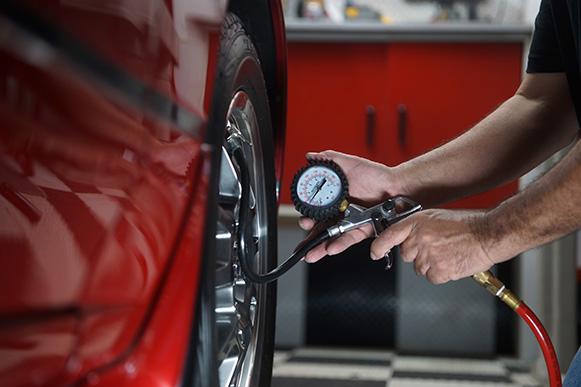Maintaining proper tire inflation is relatively simple and essential to the overall tire performance of your vehicle. A properly inflated tire will provide longer life, quicker steering response, better fuel efficiency and a smoother ride than an improperly inflated tire. Both underinflation and overinflation can cause headaches like premature treadwear and possible tire failure. The best way to ensure you're getting the most out of your tires is to check your tire pressure on a monthly basis.
Knowing how to use a tire pressure gauge is very simple. Here’s how to check tire pressure and refill your tires.
Items You Need When Checking Tire Pressure
Tire pressure gauge
Air compressor
Pen and paper
Your tire pressure gauge can be digital or standard. Auto parts stores typically carry both. Many auto parts stores sell portable air compressors that run from your car battery or 12v power port. Alternatively, you can use the air compressor found at most gas stations. They usually cost $0.50 or $1.00 to use.
Vehicle manufacturers specify PSI – literally “pounds per square inch” of pressure – assuming tires are cold. Tires are considered cold when the vehicle has been parked for three hours or more, or if the vehicle has been driven less than a mile (1.6 km) at moderate speed. PSI is the unit your pressure gauge uses to provide readings.
Look on the driver’s side door jamb or your owner’s manual to find the recommended cold tire PSI for your front and rear tires. If you cannot find it, you should consult your vehicle dealer, manufacturer, or a qualified tire professional.
If your front and rear tires require different pressure levels, write down the correct PSI for each to avoid getting confused as you move around your vehicle checking tire pressure.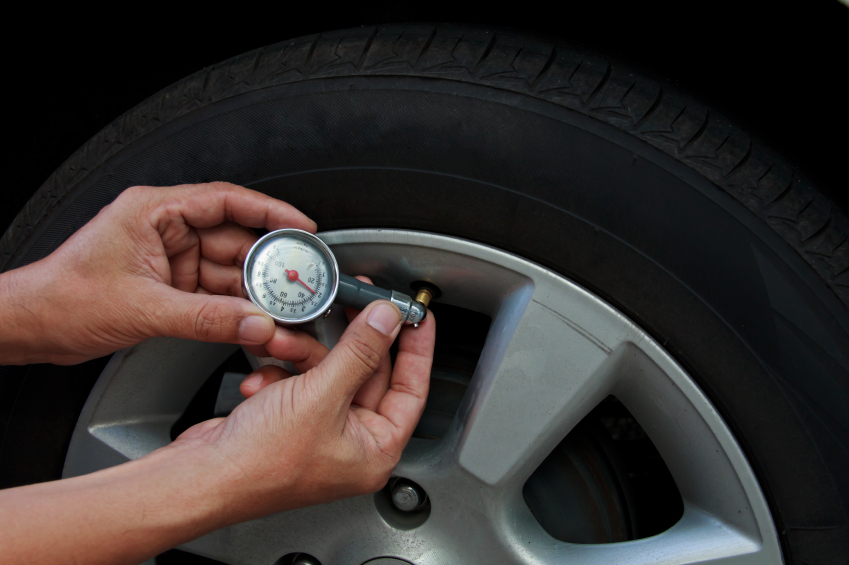
Remove the valve cap from one of your tires. Then place the pressure gauge on the valve stem and press down hard enough so the hiss sound disappears and your gauge provides a reading. With a standard gauge, the air pressure will push a small bar out from the bottom of the gauge. Measurement units are etched into the bar. A digital gauge will show you the reading on a screen.
Write down the reading and repeat this process for all four tires.
Use an air compressor to refill any tires with low pressure. Many air compressors are different, so read directions carefully to be sure you’re using it correctly.
If you’re using the air compressor at a gas station, be sure to park so that the hose will reach all four tires. Insert change into the machine until you hear the motor running. Fill each tire by placing the end of the hose over the valve stem and pressing on the lever.
Using a gas station air compressor means your tires might be “hot. ” If it is necessary to adjust inflation pressure when tires are “hot”, set their pressure to 4 psi (14 kPa) above the recommended cold inflation pressure. Recheck the inflation pressure when the tires are cold.
” If it is necessary to adjust inflation pressure when tires are “hot”, set their pressure to 4 psi (14 kPa) above the recommended cold inflation pressure. Recheck the inflation pressure when the tires are cold.
After filling your tires, use the gauge to check pressure again. At this point, it’s ok if you overfilled the tires because you can always let some air back out. Never drive on overinflated tires. Overinflation can result in decreased traction, premature wear, and decreased impact absorption.
Make the above procedure a monthly ritual. Regularly checking your tire pressure is the best way to ensure your tires never dip far below the optimal PSI.
Accuracy matters and you should keep that in mind when choosing a gauge. For just a few dollars, you can find a quality, accurate tire pressure gauge that gives accurate readings. If you’re not sure which one to purchase, ask a professional technician which he or she prefers.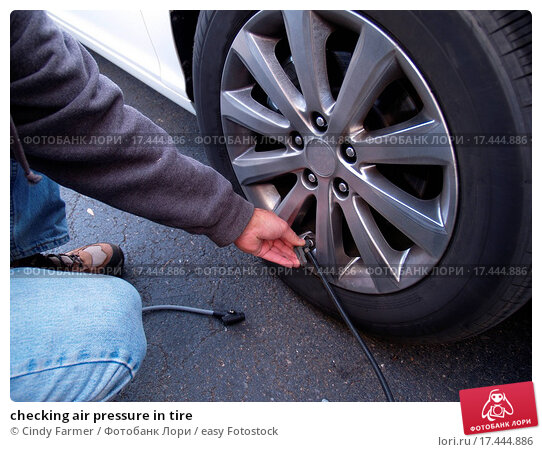
A digital tire pressure gauge will provide accurate readings, but don’t forget that it operates on a battery. If you think having to replace the battery will prevent you from using it, it’s best to go with a standard gauge.
It’s best to use your personal tire gauge versus those available attached to air hoses at service stations. Of all the pressure gauges out there, they’re the most likely to be weathered, and possibly inaccurate.
There’s never a good time for a flat. That’s why Bridgestone DriveGuard tires are masterfully engineered to keep you moving for up to 50 miles at speeds up to 50 MPH without disruption.
There’s never a good time for a flat. That’s why Bridgestone DriveGuard tires are masterfully engineered to keep you moving for up to 50 miles at speeds up to 50 MPH without disruption.
See Details Find Your Fit
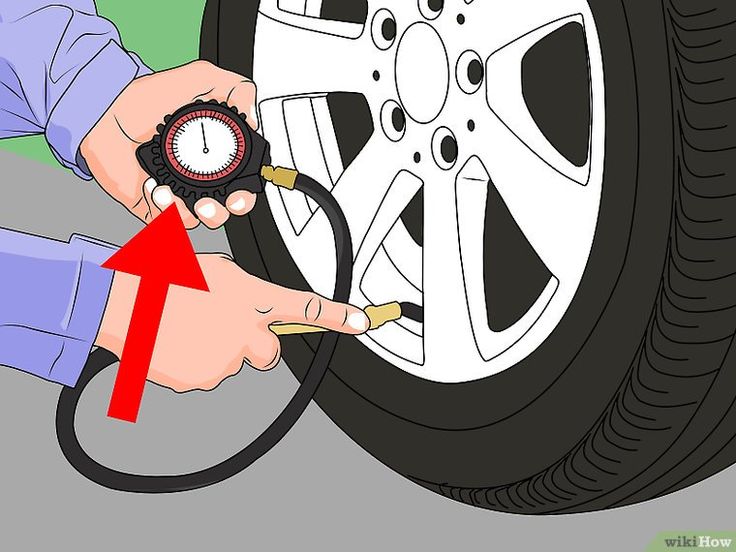 Make it a part of your monthly maintenance routine in a matter of minutes.
Make it a part of your monthly maintenance routine in a matter of minutes.Every editorial product is independently selected, though we may be compensated or receive an affiliate commission if you buy something through our links. Ratings and prices are accurate and items are in stock as of time of publication.
1 / 7
Driving on improperly-inflated tires can wear out the tread and cause steering problems. That’s why it’s important to check your tire pressure regularly.
Fortunately, checking tire pressure only requires two tools — a tire pressure gauge and an air compressor. Most gas stations have an air compressor so you only need to own one tool. The whole process is relatively quick, too. In a matter of minutes you’ve done a lot to ensure a safe and smooth ride.
Before you begin, make sure the car has been parked for three to four hours so you get an accurate reading from the gauge. If you drive to a gas station to use an air compressor, try to find one less than a mile away.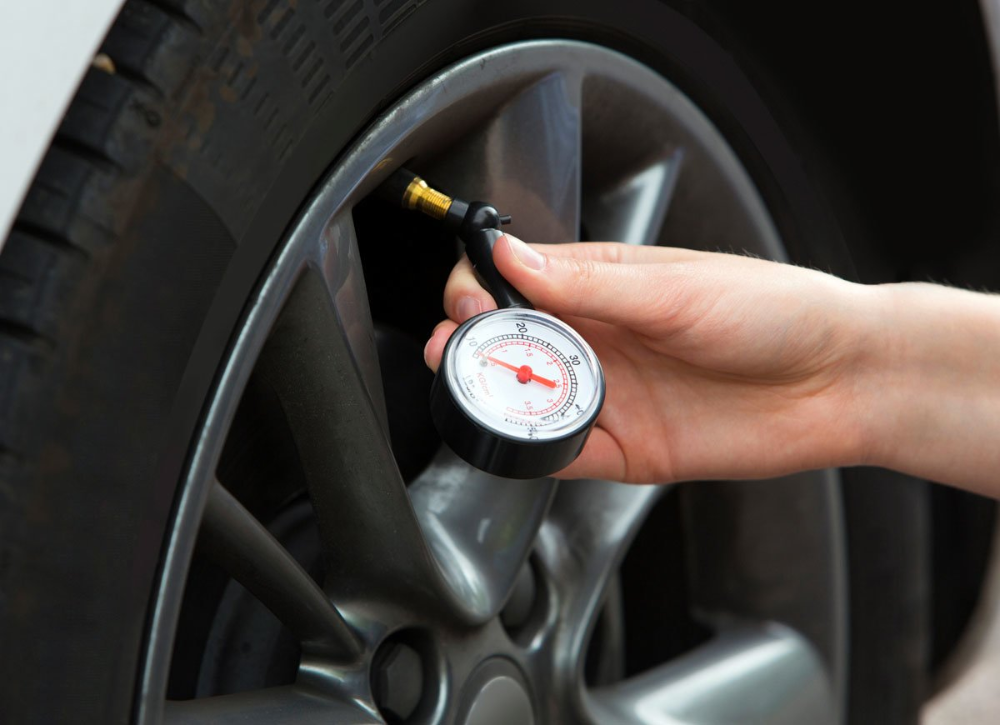
2 / 7
Veronica Graham
3 / 7
Veronica Graham
The driver’s side door jamb typically has a sticker with the recommended PSI (pounds per square inch) for the tires. Most manufacturers recommend 30 to 32 PSI for all four tires, although some cars will have different PSI recommendations for the front tires and back tires. If you don’t see the recommended PSI on your door jamb, check your owner’s manual.
If you don’t see the recommended PSI on your door jamb, check your owner’s manual.
4 / 7
Veronica Graham
Unscrew the cap on the tire air valve and place it somewhere safe.
5 / 7
Veronica Graham
Press the gauge onto the tire air valve straight on, and press it hard. This creates a tight seal around the tire air valve so you don’t accidentally release air from the tire. You’ll hear a hissing sound if air is coming out. A small bar with numbered notches will pop out of the pencil gauge with the tire pressure reading.
6 / 7
Veronica Graham
Fill up the tire by pressing the air compressor nozzle onto the tire air valve in the same manner as the gauge — hard and straight-on to create a tight seal. Hold the nozzle onto the tire air valve for about 30 seconds to one minute, depending on how low the initial reading is. Repeat Step Three to get the new reading. Add or release air as needed to reach the recommended PSI.
Hold the nozzle onto the tire air valve for about 30 seconds to one minute, depending on how low the initial reading is. Repeat Step Three to get the new reading. Add or release air as needed to reach the recommended PSI.
7 / 7
Veronica Graham
Repeat Steps Three and Four on the three remaining tires.
Originally Published: April 16, 2020
Veronica Graham
Veronica Graham is a freelance writer in Arlington, Mass. Her work has appeared in The Washington Post and SheKnows. She's covered health, politics, high school football and everything in between. Graham enjoys learning about the world through a variety of lenses as a reporter.
Vladimir Gavrilov
Estimated reading time: 3 minutes
2064
Category: Service Auto
The design of modern tires has changed. They have strong sidewalls designed to maintain stability during maneuvering. If pressure begins to drop in such wheels, then they do not deform too much, and it is almost impossible to determine “by eye” when pumping is required. A pressure gauge usually comes to the rescue, but what if it is not at hand?
They have strong sidewalls designed to maintain stability during maneuvering. If pressure begins to drop in such wheels, then they do not deform too much, and it is almost impossible to determine “by eye” when pumping is required. A pressure gauge usually comes to the rescue, but what if it is not at hand?
Many vehicles now have electronic systems that detect tire pressure differences using ABS. They work according to indirect data based on electromagnetic sensors in the hubs and register a pressure drop of about 1 atm. If the pressure in one of the wheels has decreased, then it sags, which means that due to the reduction in diameter, its rotation speed increases. Sensors pick up the difference in rotational speed and the electronic unit issues a warning in the form of a yellow lamp. Next, the driver is required to find which of the four tires has a puncture.
This can be done by tapping.
The stiffness of the sidewall and the sound of the impact will tell you which wheel needs pumping. It is necessary to beat with a fist in a glove with the application of force. Usually, when hitting an inflated tire, the hand feels a strong elastic response, as if hitting a wooden table.
It is necessary to beat with a fist in a glove with the application of force. Usually, when hitting an inflated tire, the hand feels a strong elastic response, as if hitting a wooden table.
However, if the pressure in the tire is less than one and a half atmospheres, then the blow becomes deaf and soft, and the rubber springs more actively. The sidewall flexes, and the driver can feel its compliance. The pressure difference between the four wheels is best recognized by blows.
When hitting, listen for the sound as well. If all tires ring the same, then you can go. But if at least one tire makes a dull sound on impact, then you should pay more attention to it.
Insufficient tire pressure affects the vehicle's coast. Any driver knows how far their car can roll at neutral speed. If the vehicle slows down more than usual on familiar straights, then it is possible that one or more wheels are not inflated as they should be.
Normally, a reduced coastdown is accompanied by a slight side pull of the machine, especially when one of the front wheels is flat.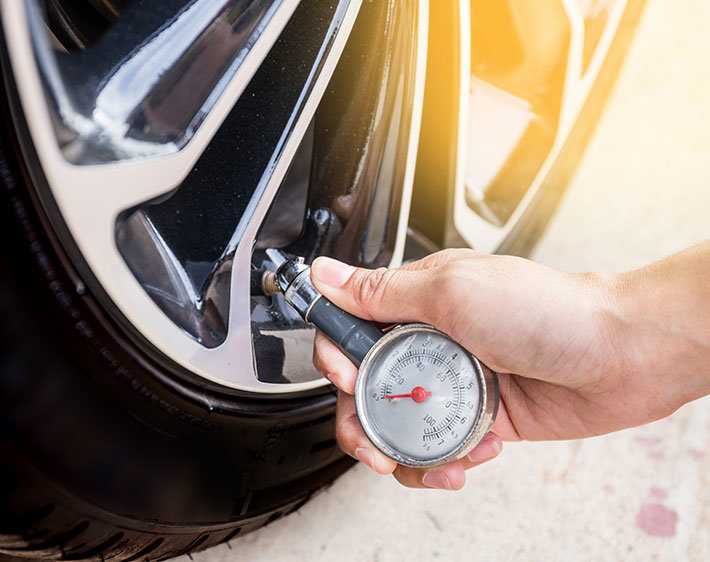 The car squats on a flat tire and forces the suspension to steer a bit.
The car squats on a flat tire and forces the suspension to steer a bit.
As soon as the driver feels this effect, it's time to look for the nearest gas station with a tire inflation system. In extreme cases, in a store at a gas station, you can buy a portable compressor along with a pressure gauge and inflate tires.
According to the standards, the pressure difference in tires can vary within 0.2-0.3 atm., But not higher. With a puncture from a nail overnight, the pressure drops by about 0.8 atm. and more, which is fraught with a decrease in controllability. Tire sag in this case is already noticeable, but not every driver can feel the difference, especially when the car is parked in the snow.
If you set off on an uninflated tire, a number of troubles can occur. The driver can drive on a damaged tire for a long time until the pressure in the wheel reaches 1.0 atm. Then the car will pull to the side. However, many drivers mistake this for the effect of the natural slope of the road and continue driving. In this case, the tire experiences increased loads for a long time, fuel consumption increases and tread wear increases. The rubber is abraded along the edges of the contact patch. The critical pressure is 0.5 atm. With it, the tire can be torn off the rim during braking.
In this case, the tire experiences increased loads for a long time, fuel consumption increases and tread wear increases. The rubber is abraded along the edges of the contact patch. The critical pressure is 0.5 atm. With it, the tire can be torn off the rim during braking.
Therefore, a visual inspection of the car with small taps, carried out before each trip, can save you from many problems that lie in wait on the road.
car tirespressurepunctured tires
Next article
Media news2
Incredibly, such a simple parameter as tire pressure hides a lot of vehicle performance. For example, accelerated tire wear, increased fuel consumption, poor directional stability and additional stress on the suspension all depend on the amount of air in the wheel. Every motorist should know how to check tire pressure and how often to inspect the wheels. Firstly, these are the safety conditions of traffic rules. Secondly, the rule applies: careful attitude to technology - saves a personal budget.
Firstly, these are the safety conditions of traffic rules. Secondly, the rule applies: careful attitude to technology - saves a personal budget.
A car is a technically complex device. The work of all nodes is accurately calculated by engineers. In order for the car to meet factory specifications, the automaker informs the owner that the operating parameters are being met. One of these parameters is "tire pressure". The requirements for the amount of pressure in the wheels are published in the operating instructions.
In addition, the information is duplicated by a sticker (nameplate) on the rack in the driver's doorway. The plate shows: tire size, rim dimensions and air pressure. Sometimes, the decal is placed in the passenger's doorway or on the inside of the gas cap. The unit of pressure can be specified in bar (Bar), kilopascals (kPa) or pounds (PSi).
According to the technical regulations, it is necessary to measure tire pressure once a month. If the winter period has come, then the check must be carried out 2 times a month. But remember that air is a gaseous substance. It expands when heated and contracts when cold. Therefore, do not check the pressure immediately after stopping the car. Tires need to cool down. The same with low cold, the device is guaranteed to show a lower pressure, which will return to normal after driving, when the air in the tire warms up.
If the winter period has come, then the check must be carried out 2 times a month. But remember that air is a gaseous substance. It expands when heated and contracts when cold. Therefore, do not check the pressure immediately after stopping the car. Tires need to cool down. The same with low cold, the device is guaranteed to show a lower pressure, which will return to normal after driving, when the air in the tire warms up.
Many car owners instinctively kick the wheel with their foot, checking the cylinder for the presence of air. We inherited this manner from our ancestors, kicked by grandfathers and fathers. But this method works from the part when the tire is completely empty and it is no longer possible to drive. Correctly measure the presence of pressure in tires, it is possible only with the help of a pressure gauge. Buying a device is not difficult, as it is sold in any auto shop. Here is a step-by-step guide on how to measure tire pressure yourself:
 After pumping, it is necessary to read the pressure parameters again (the presence of a pressure gauge on the pump does not ensure the accuracy of measurements).
After pumping, it is necessary to read the pressure parameters again (the presence of a pressure gauge on the pump does not ensure the accuracy of measurements).
Carefully study the scale of the measuring units of your pressure gauge, which can be: Bar, kPa, kg/cm2 and PSi (pounds) the measures are different. For example, 2.2 (Bar) would equal 220 (kPa) or 31.908 (psi).
"You can't spoil porridge with oil" - this commandment does not apply to overinflated wheels. Excessive pressure will give discomfort in driving. Along with this, the center of the tread begins to wear out rapidly. The exception to the rule is if you add air on an overloaded car. But, the unloading field, bleed the excess from the cylinders.